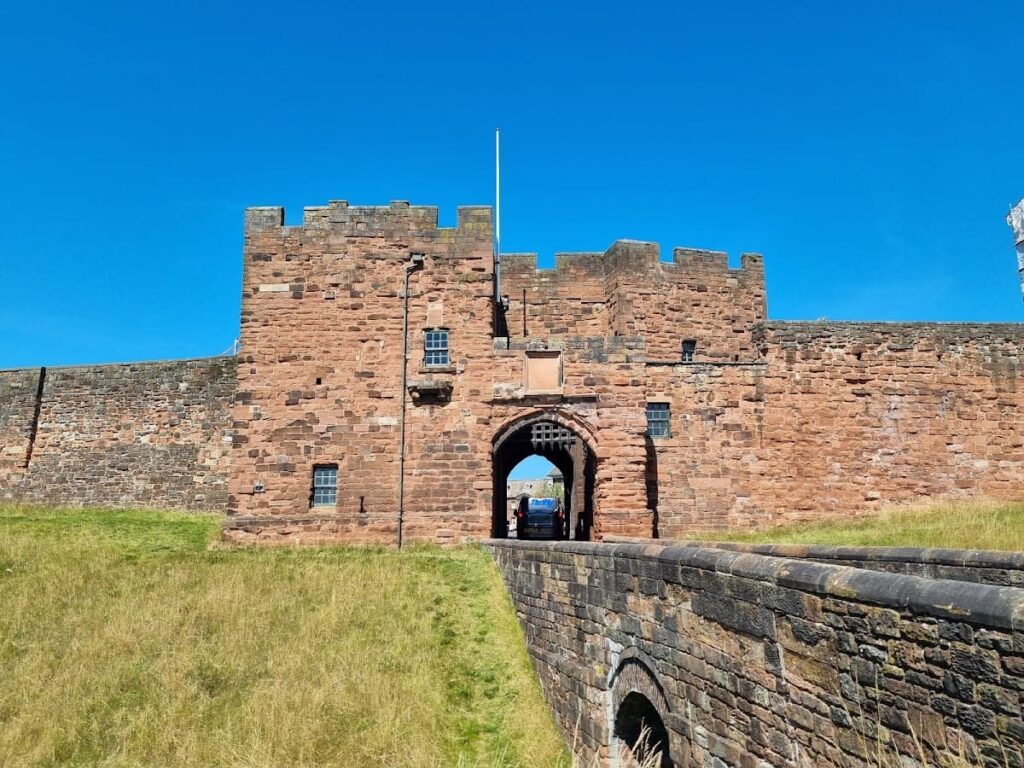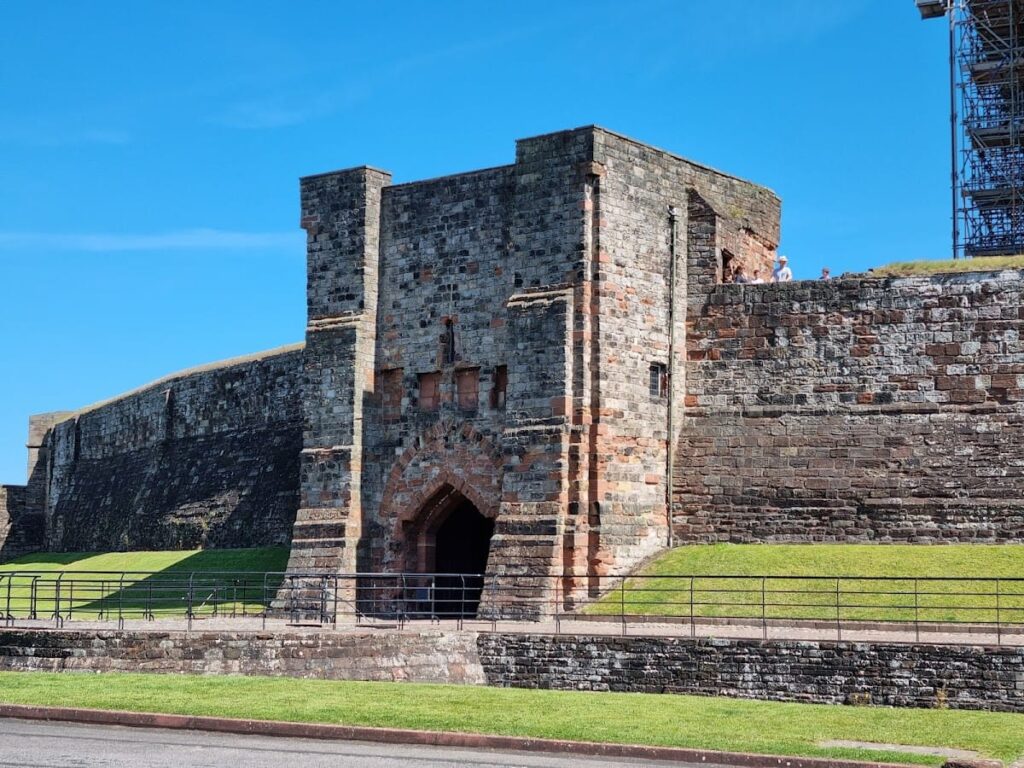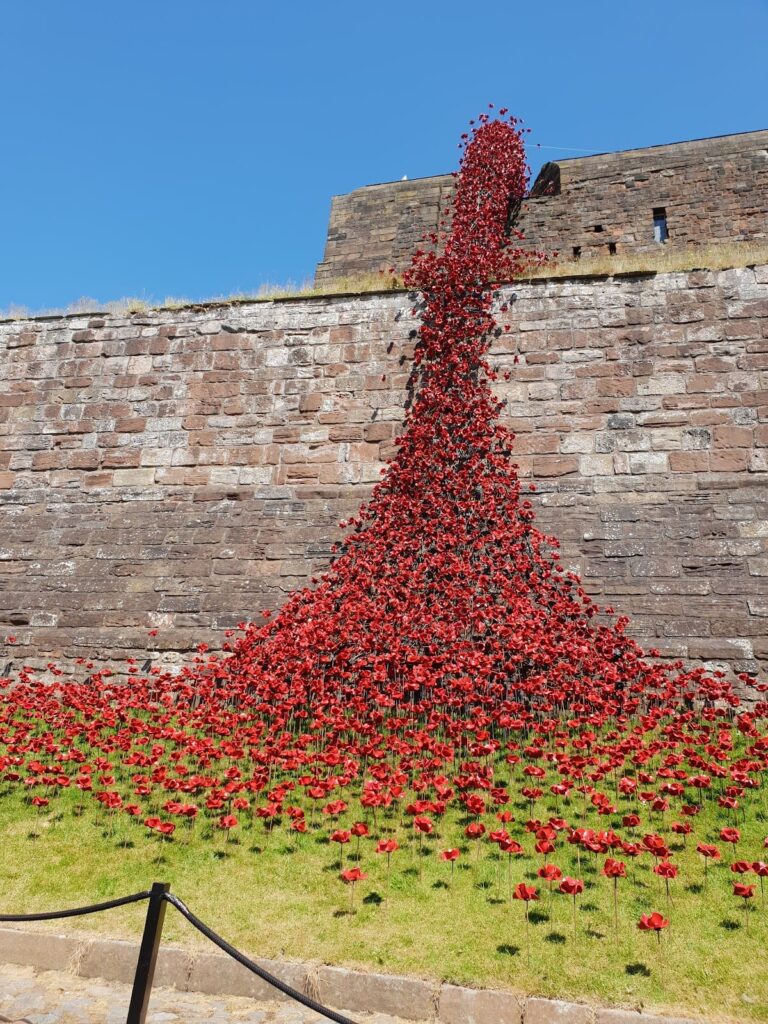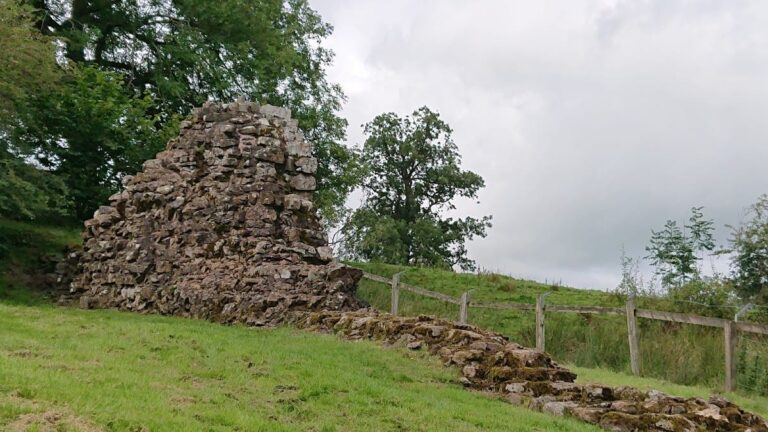Carlisle Castle: A Historic Fortress in Cumbria
Visitor Information
Google Rating: 4.4
Popularity: Medium
Google Maps: View on Google Maps
Official Website: www.english-heritage.org.uk
Country: United Kingdom
Civilization: Medieval European
Remains: Military
History
Carlisle Castle stands in Carlisle, Cumbria, on the site of the Roman fort known as Luguvalium. This fort dates back to around 72 AD, established during Roman Britain. The location was chosen for its strategic importance near Hadrian’s Wall, a defensive frontier of the Roman Empire.
The castle’s origins as a Norman stronghold began in 1092 when King William II of England ordered the construction of a motte-and-bailey fortification. This early wooden structure was built to secure the northern border of England. In 1122, King Henry I replaced the wooden defenses with a stone castle, including towers and city walls. The keep, a central stone tower, was constructed between 1122 and 1135 and remains a key feature of the site.
Following the Battle of the Standard in 1138, the castle was rebuilt by David I of Scotland, who used it as a royal residence until his death there in 1153. Over the next seven centuries, Carlisle Castle was a contested fortress in the ongoing conflicts between England and Scotland. It changed hands multiple times during the Wars of Scottish Independence and later during the Jacobite Rising of 1745–1746.
In 1568, Mary, Queen of Scots, was briefly held prisoner in the castle’s Warden’s Tower. During the reign of Henry VIII, the castle was adapted for artillery defense, with the involvement of engineer Stefan von Haschenperg. This modernization reflected the growing importance of cannon in warfare.
The castle endured a lengthy siege lasting eight months in 1644 during the English Civil War, held by Parliamentary forces. Its last military engagement occurred during the Jacobite Rising of 1745, after which it ceased to serve as a frontline fortress. Following 1746, the castle experienced partial neglect, with minor repairs such as the drawbridge replacement in 1783. Some parts were demolished in the 19th century to provide building materials.
From 1873, Carlisle Castle functioned as a military depot under reforms that reorganized the British Army. It housed the 34th and 55th Regiments of Foot, later known as the Border Regiment, and eventually the King’s Own Royal Border Regiment until 1959. The Army Reserve continues to use sections of the castle, including the Burma Block.
The post of Governor of Carlisle, a position held by a succession of officials since the 12th century, was abolished in 1838. In August 1996, the castle was designated a Scheduled Ancient Monument, recognizing its medieval and Roman archaeological significance. In 2016, Historic England documented historic graffiti and carvings inside the castle, including prisoner inscriptions and a Roman altar stone. The castle also houses Cumbria’s Museum of Military Life, which preserves the history of local regiments and militias.
Remains
Carlisle Castle is a stone keep fortress built near the remains of Hadrian’s Wall, occupying the site of the Roman fort Luguvalium. The layout includes a central keep, surrounding towers, curtain walls, and a courtyard formed by several key buildings.
The keep stands about 21 meters tall today, though it was originally higher. It has three floors and a roof modified in the 16th century to hold cannons. This adaptation involved lowering the tower by removing its uppermost floor. The keep’s entrance featured a portcullis, a heavy grilled door that could be dropped to block access, and likely an outer bailey or forebuilding added in the 12th century under David I of Scotland for extra defense.
Inside, a dividing wall runs through all three floors to support the weight of artillery on the roof. The first floor contained the king’s hall, complete with a latrine and access to a well. The second floor, originally the top floor before modifications, housed a kitchen, latrine, chapel, and prison cell. The chapel is believed to be the place where David I died. Between the chapel and prison is a small guardroom whose walls bear medieval and post-medieval graffiti, including religious images, animals, and heraldic symbols dating to around 1480.
The third floor was used as a gunpowder store in the 16th century but suffered an explosion in 1547 that damaged the structure. Today, this floor hosts an exhibition about the Jacobite Rising. The castle grounds include the Captain’s Tower, the regimental museum, the arsenal, and the powder magazine, all arranged around the courtyard.
The Captain’s Tower, possibly from the 12th century, is built of grey stone with later red sandstone additions. It has two floors and an external stairway leading to the curtain wall. Traces of a portcullis remain here as well. Nearby lies a 16th-century half-moon shaped underground battery designed by Stefan von Haschenperg in 1541. Originally surrounded by a moat, this battery was constructed to defend against Scottish attacks.
The castle’s curtain walls are equipped with cannon emplacements dating from the 17th century. Queen Mary’s Tower, built in 1308 and once used as the prison for Mary, Queen of Scots, was demolished in 1835 due to instability. Its appearance is known from a drawing made in 1797.
Beneath the medieval structures lie the buried remains of the Roman fort Luguvalium. The castle today reflects a mixture of preserved medieval fabric, 19th-century military alterations, and partial demolition. It remains accessible under the care of English Heritage.










